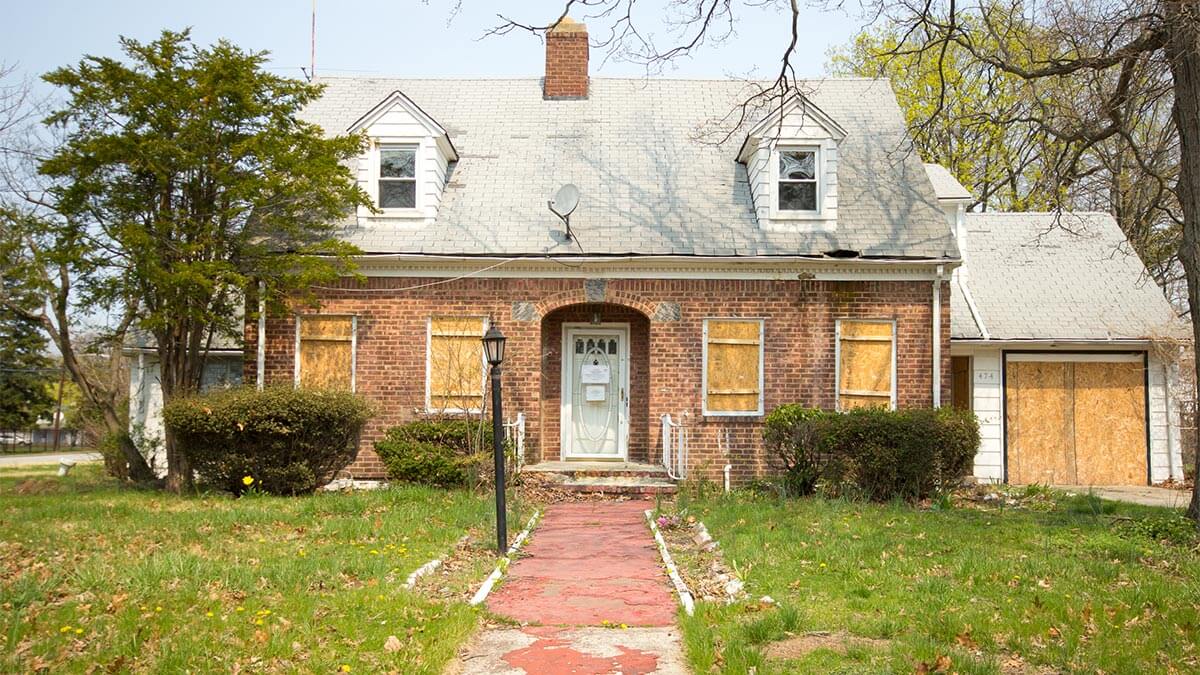Many people would argue that real estate isn’t that hard to learn. If you want to sell a house, there are plenty of resources online or at your local library that you can use to learn the trade.
There is a catch, though. Learning real estate involves learning a lot of terms and definitions. Here’s an exhaustive list of phrases you’ll want to know if you intend to dabble in real estate.
An important term you’ll want to familiarize yourself with is “seller’s market.” Seller’s market definition, in a nutshell, is when there are not many homes on the market, which drives up demand.
Another vital aspect of real estate is trends. Real estate trends help determine if you’re in a seller’s market. If you’re unfamiliar with real estate, real estate terms, and real estate trends, read on to learn more.
Compare Cash Offers from Top Home Buyers. Delivered by Your Local iBuyer Certified Specialist.
One Expert, Multiple Offers, No Obligation.
Why you should know real estate trends
Understanding real estate is primarily a lot of research. One thing you should keep on top of is learning real estate trends and predictions before you step out onto the market.
As mentioned earlier, the internet is your friend. You can use many sites to learn what’s popular in real estate for the year and beyond. You’re probably wondering how real estate trends affect a seller’s market.
If you know what’s popular in real estate, you’ll see if you’re in a position to put your home on the market. Following trends will help you tailor your listing to people looking to buy.
Current real estate trend examples
We’ll give you examples of current trends in real estate. It might interest you that there are few houses on the market now. More people are looking to buy than there are selling. So, yes, we are in a seller’s market.
By the end of 2021, the average DOM (days on market) for homes was 47 days. “Days on market” is the number of days a home stays listed on local MLS (multiple listing services).
Remember what DOM is and how it impacts selling or buying a home, because it comes back later in the article.
Another trend is that home prices keep rising. Considering the cost of everything keeps increasing, this may not surprise many readers. While prices rose quicker in 2021, they show no signs of slowing down this year.
What is a seller’s market?
Understanding real estate trends is imperative if you want to take advantage of the seller’s market. But what all does a seller’s market entail?
Earlier, the article mentioned that the seller’s market definition is when there’s low availability of homes for people to buy. The fewer houses there are for people to buy, the more demand there is for homes.
While a seller’s market is problematic for buyers, sellers thrive in these markets. The seller is primarily in control because they have what the buyer wants – a house.
You know you’re in a seller’s market when:
- Homes sell quickly
- Prices increase
- Sellers don’t accommodate buyer’s demands
- Fewer choices for homes
- Buyers are less likely to get discounts
- Multiple buyers make bids on the same property
- Buyers are generally unhappy
Below are two seller’s market examples. The first example happened two years ago during the beginning of the pandemic.
Demonstrating a seller’s market
In March 2020, the housing market stopped like most businesses and services. When the country reopened, the housing market – like many services and companies, couldn’t keep up with consumer demand.
30-year mortgage rates were also at an all-time low during the time. People didn’t have to worry about pricey mortgages putting them off homeownership.
The lack of housing and low-interest rates created a strong seller’s market. If that example doesn’t help demonstrate a seller’s market, here’s another example.
You live in a city with 10,000 homes, and 3,500 are for sale. Many new jobs have come to your city, making it a prime location for people looking to fill job vacancies.
People from out of town and local citizens will look to fill those homes. Locals will want new homes as first-time homeowners or are looking to upgrade from their old, smaller homes.
But the new jobs will eventually require people from out of town. Not everyone in your city will need or want a new occupation.
The competition for houses will create a seller’s market because demand for homes increases faster than supply. Eventually, selling prices will rise due to house rarity value.
What is a buyer’s market?
The simplest way to describe a buyer’s market is the opposite of the seller’s market definition. A buyer’s market is when there’s an abundance of homes for consumers to purchase.
The more houses there are for people to buy, the less control a seller has on the market. You could opt to post a pricy listing, but buyers can always pick a less expensive house to buy.
A buyer’s market is one where sellers have significantly less control. You can’t heavily dictate a need where consumers have more options. It’s also a good rule of thumb to remember that your home will need to stand out.
You know you’re in a buyer’s market when:
- Buyers control the market
- Houses take longer to sell
- Prices decrease
- Sellers accommodate buyers’ demands
- There are plenty of choices for homes
- Buyers often get discounts
- Sellers are generally unhappy
The adage “dress to impress” applies to a buyer’s market. But instead of dusting off your best clothes, you’ve got to dress your house up, so it appeals to buyers.
Example of a buyer’s market
You live in a town where 50,000 homes and 8,000 are currently on sale. Your town’s most significant source of jobs has shut down, and many people are out of work.
Many citizens want to sell their homes and move somewhere with better economic opportunities. These people put their homes on the market, and suddenly there are 12,000 homes for sale.
There aren’t many people that want to move to your town because there aren’t many jobs. The people still there either don’t want to or can’t afford to purchase a new home right now.
The few who can afford a home have an overwhelming advantage because there are many more houses than buyers.
Tips to sell in a buyer’s market
The first thing you should do is stage to impress the buyer. In theory, it sounds easy to stage your home, so people want to purchase it, but every small thing matters.
Take care to remove personal effects from view—photos of your family, children’s toys, embroidered items, and electronics. Make the house feel homey but not like you live there.
Remember to clean the house from top to bottom before people come to look. Showing your home at its best will make people more inclined to buy (or at least consider buying).
Clean carpets, floors, countertops, and windows. Don’t forget the outside, either. Break out the power washer for the siding and driveway if needed. Apply a new coat of paint to worn doors, trim, and the mailbox.
Keep in mind the landscaping as well. Make sure the grass and other fauna are neat and trim.
The most important thing to do is offer realistic pricing. Remember, just because you can provide exorbitant prices doesn’t mean you should. Talk to a real estate professional if you’re unsure what the best listing price is.
Why days on market matters
Remember earlier we talked about days on market. DOM is the length of time a house is listed (or market time), but why does that matter? Market time helps buyers determine whether a home is worth their time.
If you’re looking for a listing, pay close attention to the DOM to see other buyers’ reactions to the property. Homes with short DOMs can sell at or above the asking price.
For example, we’ll say there’s a house with a DOM of 190 days. Odds are the home is overpriced or impaired in some way. The seller either misread the market or is selling “damaged goods.”
Houses with long DOMs are “stale,” which means they’ve been on the market for too long. Stale homes aren’t likely to sell unless the seller changes their approach.
How long DOMs benefit you
Sellers don’t want their homes to become stale because stale homes look unappealing to buyers. If you come across a home that’s been listed for a while, you may have found a discount.
DOM can tell you if a seller is unwilling to budge on their asking price, but it can also lead to people getting no offers.
For many sellers, a low offer is better than nothing; these people may lower their prices to move their houses off the market. One important thing to remember is that homes with high DOMs aren’t necessarily bad options.
A home may appear a terrible choice because it’s not moving but could be beautiful in reality. That’s why it’s essential to keep an eye out for all DOMs.
Understanding the seller’s market definition
The seller’s market definition is a low supply and high demand. “What is a seller’s market?” It’s a market where the seller has primary control. The seller dictates how things go because they have what the buyer wants.
A buyer’s market is the exact opposite. In a buyer’s market, consumers control the flow of home sales. Homes are abundant, so buyers don’t have to settle for a specific seller’s price if they don’t want.
If you’re interested in selling your home, contact iBuyer. We’re in the business of selling homes fast while putting our customers first. Enter your home address and create an account to see what your home is worth.




